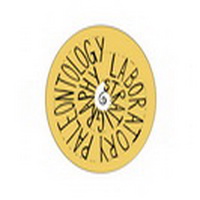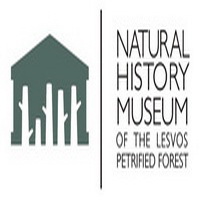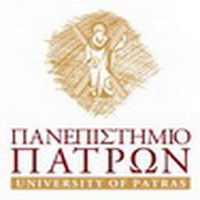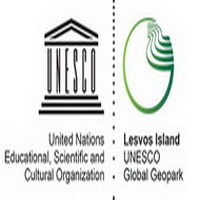Prof. Nickolas C. Zouros
Professor, University of the Aegean, Greece
Director of the Natural History Museum of the Lesvos Petrified Forest
Short CV:
N. Zouros is Professor at the Department of Geography at the Aegean University, Greece. Vive President of the University Board.
He is the Director of the Natural History Museum of the Lesvos Petrified Forest since its foundation in 1995. He is responsible for research activities and excavations in the Lesvos Petrified Forest - protected natural monument and works as the manager of the Lesvos Island- UNESCO Global Geopark since 2000.
He is one of the founders of the European Geoparks Network (EGN) in 2000 and since then he’s an elected EGN Coordinator.
He is a UNESCO Advisor on Geoparks and a member of the Global Geoparks Bureau since 2005.
Since 2014, he is the elected President of the Global Geoparks Network.
He has authored more than 100 scientific articles in international journals and conferences’ proceedings and 20 books on Geoparks, Geo-conservation and Geo-tourism.
“Lesvos Petrified Forest: A unique Natural Monument”.
Friday, May 19th 2017
Abstract:
On western Lesvos, petrified trunks scattered over an area of 150.000 hectares constitute the famed ‘’Petrified Forest’’, one of the most important natural heritage monument in the world.
The major concentrations of fossilized trunks are located in the regions of Sigri, Antissa and Eresos.
Aside from the petrified trunks, fruits, branches and leaves have also been preserved.
Scientists researching and studying the Petrified Forest repeatedly emphasize the uniqueness of the site. The forest is of particular scientific value as it is not just a group of trees but an entire ecosystem fossilized in situ as a result of intense volcanic activity in the region 20 million years ago.
The large number of petrified trunks preserved standing with their root systems intact in a full stage of development attest to the fact that these trees were petrified in their natural location. In other words, here we have an autochthonous petrified forest.
In the Petrified Forest we can gather information regarding the plant species, which constituted the island’s flora and the climatic conditions, which prevailed in the Aegean millions of years ago. In other words, the Petrified Forest constitutes a unique ‘’testimonial’’ of the geological history of the Aegean basin over the last 20 million years.
Recognizing the major environmental, geological and paleontological importance of the Petrified Forest, the Greek State has declared the area an officially Protected Natural Monument (Presidential Decree 443/85). Specific sites within the Forest have been further designated as ‘’absolute protection areas’’. In 1987, the Lesvos Forestry Directorate initiated intervention activities in the area of the Petrified Forest, the aim being the promotion and rational management of the monument.
In 1994 marked the foundation of the Natural History Museum of the Lesvos Petrified Forest in the town of Sigri on the western edge of the island. Objectives of the museum are the study, research, promotion, preservation and protection of the Petrified Forest of Lesvos.
In order to protect the petrified forest and ensure its proper management, serious efforts have been carried out during the last decades, including scientific research on this exceptional natural monument, conservation of fossils, promotion of the sites, creation of visiting parks, , environmental education in combination with local development.
The Museum is also playing a dynamic role in the cultural, economic and social development of the area, hosts and sponsors international scientific conferences and symposia, seminars, voluntary programs, educational programs, cultural festivals, exhibitions, lectures and other cultural events, in order to promote and protect the Lesvos Petrified Forest.
Dr. Andreas Koutsodendris
Research Associate
Institute of Earth Sciences, Heidelberg University, Germany
Short CV:
Dr. Koutsodendris studied Geology (BSc) and Environmental Oceanography (MSc) in Patras (Greece) before moving to Germany, where he received his PhD (Frankfurt, 2011) on the climate dynamics of one of the most extreme past interglacial periods of the Quaternary (i.e., Marine Isotope Stage 11). Since 2014, he has been a Research Associate (‘Akademischer Rat’) at the Institute of Earth Sciences, Heidelberg University. His research focuses on the gene¬ration and interpretation of long, high-resolution paleoclimate records for the Quaternary – including the climate archives of Tena¬ghi Philippon and Lake Ohrid (Balkan Peninsula) and Qaidam Basin (Tibetan Plateau) – integrating pa¬ly¬no¬logical, sedimentological and organic as well as in¬organic geochemical data. In 2016, he sailed on International Ocean Discovery Program (IODP) Expedition 361 in the SW Indian Ocean with the aim of establishing land-sea correlations off SE Africa in order to reconstruct terrestrial ecosystem and climate dynamics on the African continent during critical intervals of hominid evolution.
“Short-term climate variability in Southern Europe during the past 500 ka: insights from a new centennial-scale pollen record from Tenaghi Philippon (NE Greece)”.
Saturday, May 20th 2017
Abstract:
The limnotelmatic sequence of Tenaghi Philippon (NE Greece) has been recognized since the 1960’s as a unique archive of terrestrial climate and ecosystem dynamics for the Quaternary in Europe. New drilling campaigns carried out in 2005 and 2009 have yielded a 200-m-long sediment record that covers the past ~1.35 Ma continuously. A robust age model for the cores was developed using detailed tephrostratigraphy and orbital tuning. Here a new palynological record from Tenaghi Philippon is presented that spans the past four glacial-interglacial cycles (i.e., MIS 1–12) at unprecedented temporal resolution (~200 years). The record captures abrupt climate change with high fidelity both during glacial and interglacial periods as documented in Greenland ice cores and marine records from the North Atlantic (e.g., Ocean Drilling Program Site 983). Our results indicate a teleconnection of the high latitudes of the northern hemisphere and the NE Mediterranean region, which we attribute to an interplay between the westerlies and the Siberian High climate systems. These results highlight the potential of the new, highly resolved pollen record from Tenaghi Philippon to serve as a proxy-based template for short-term climate and terrestrial ecosystem dynamics in the northern hemisphere.
Prof. Tunoğlu Cemal
Professor,
Department of Geological Engineering,
Hacettepe University, Turkey.
Short CV:
Prof. Tunoglu was born in 1957 in Kastamonu, Turkey. He studied at Hacettepe University, Department of Geological Engineering, between 1976-1991 (BSc, MSc, PhD) and he has been working as a lecturer since 1993.
He is a micropaleontologist, more specifically ostracodologist, and is interested mainly in systematics of ostracods and paleoenvironmental studies based on them. He has many articles, 32 of which are published in international peer-reviewed journals with 262 citations on related subjects.
He has one daughter. He knows English.
“Ostracods and their significance in geology”.
Saturday, May 20th 2017
Abstract:
Ostracods are small crustaceans recording from Early Paleozoic to Recent. More than 65.000 taxa have been determined until now (Ikeya et al., 2005). The bivalved shaped hard calcified part called as carapace composed of two valves that hinged each other along the dorsal margin. Average lenght of valves can vary between 0,3-1,5 mm while some marine taxa can exceed even 30 mm in lenght (Meisch, 2000). Ostracods grow by moulting, most of them have nine stages (ontogenic series) including juveniles and an adult named respectively as A-8 to A (Meisch, 2000).
As well as their importance in biology, they frequently use in geological applications such as biostratigraphy, paleoenvironmental and paleoclimatic studies (Rodriguez-Lazaro and Ruiz-Muñoz, 2012). Because of the occurence in almost every type of environments, ostracod species can be indicators of peculiar conditions. Recent applications also include paleoclimatic approaches (trace element and stable isotope geochemistry) by analysing low mg-calcite bearing ostracod valves.
The biostratigraphical, paleoenvironmental and paleoclimatic studies in Anatolia and surrounding areas which evaluate Paratetyhs, Eastern Mediterranean and non-marine ostracods are increasingly going on. In conclusion, ostracods are significant tools in Geology in terms of their aforementioned features to solve many geological problems.
Dr. Lyras George
Laboratory Teaching Staff
Department of Geology and Geoenvironment, National and Kapodistrian University of Athens, Greece.
Short CV:
George Lyras is a vertebrate palaeontologist at the Faculty of Geology and Geoenvironment of the University of Athens. His current research interests are island biogeography, paleoneurology and evolutionary paleoecology.
“The vertebrate fossils of Vatera (Lesvos Island, Greece)”.
Sunday, May 21st 2017
Abstract:
Vatera is an Early Pleistocene locality in the southern part of Lesvos Island, in which a mainland fauna of large vertebrates has been found and systematically excavated. All fossils were found in exposures within the upper unit of the Vatera Formation. This unit is represented by fluvial deposits consisting of alternations of breccia-conglomerates, sandy clays, sandy conglomerates and silt. In total, 630 fossils have been recovered from 7 sites, named Vatera E, F, DS, H, T, U and V. The fauna is composed of macaques (Paradolichopithecus arvernesis), horses (Equus stenonis), giraffes (Mitilanotherium cf. inexpectatum), deer (Metacervoceros cf. rhenanus) gazelles (Gazella agaea, G.cf. bouvrainae and G. aff. borbonica), antelopes (Gazellospira torticornis), oxes (Leptobos sp.), raccoon dogs (Nyctereutes megamastoides), badgers (Meles thorali), dirk-toothed cats (cf. Homotherium latidens), rhinoceroses (Stephanorhinus cf. etruscus), mastodonts (Anancus arvernensis) and mammoths (Mammuthus meridionalis). In addition, the remains of a small (Testudo graeca) and a giant species of tortoise (cf. Cheirogaster aff. schafferi) were also discovered. Based on the fauna composition the site has been attributed to the MN 17 (about 2Ma). The presence of a giraffe and the presence of four bovid species suggest relatively dry or open landscape.
Dr. Iliopoulos George
Assistant Professor
Department of Geology, University of Patras, Greece.
Short CV:
Dr George Iliopoulos (PhD in Palaeontology, Univ. of Leicester, 2003) is Assistant Professor of Palaeontology & Stratigraphy and head of the homonymous Laboratory in the Department of Geology, University of Patras. His main research interest is the study of Late Cenozoic vertebrates and their palaeoenvironment. His approach is multidisciplinary in nature using tools from the fields of Vertebrate Palaeontology, Taphonomy, Fossil bone geochemistry and histology, Biostratigraphy, Palaeoecology and Palaeoclimatology to decipher the affinities of prehistoric vertebrates with their environments and the diagenetic alterations that occurred after their death and final burial. However, for the last few years he has been working with the biostratigraphic and lithostratigraphic study of Quaternary deposits from Western Greece using microfossils and macrofossils. Current research activities also include the palaeontological and stratigraphical study of Palaeolithic sequences and the study of the stratigraphy and depositional environment of Quaternary lagoonal sediments from Western Greece.
"Post mortem modification in fossil bones".
Sunday, May 21st 2017
Abstract:
Fossil bones, and particularly those that belong to large tetrapods such as dinosaurs, plesiosaurs and proboscideans, always excited the imagination of people, being the main exhibits in natural history museum galleries. Nevertheless, the preservation and finally the fossilisation of bones consists a rare process. Shortly after death and for the carcasses of animals or solitary skeletal elements that will not be consumed by predators or scavengers, the bones will be exposed on the surface of the ground or sea bottoms to extrinsic processes and their modification or even their final destruction will be inevitable. Those that will be covered by sediments relatively quickly will increase their odds to get preserved and thus to follow the diagenetic process of fossilisation. Once in the ground and before being fossilised, a number of diagenetic chemical and biological processes could modify or even completely destroy bone and teeth tissues. Acidic waters could penetrate the bones and dissolve them partly or completely. Microorganisms such as bacteria and fungi could invade the bones causing originally microscopical focal destruction that could end up to the total destruction of the bones as well. Therefore, only bones that had the opportunity to avoid physical, chemical and biological damage would have the opportunity to get preserved, and become fossilised. Still, the fossil record is full of examples of modified or damaged bones and teeth, sometimes severely, that despite the odds against their preservation, they managed to “survive”, went through fossilisation processes and made it into the fossil record. These “survivors” are the ones that could tell us the stories of all those bones and teeth that did not make it into the fossil record and provide us with invaluable ecological and palaeoenvironmental information for the interactions between vertebrates, between vertebrates and other organisms and with their environments as well.



